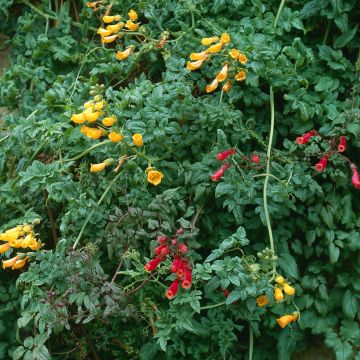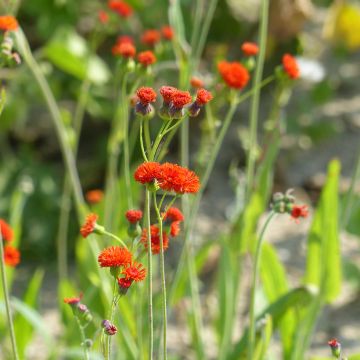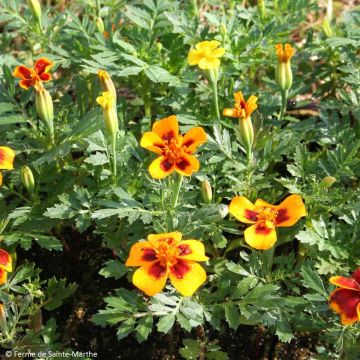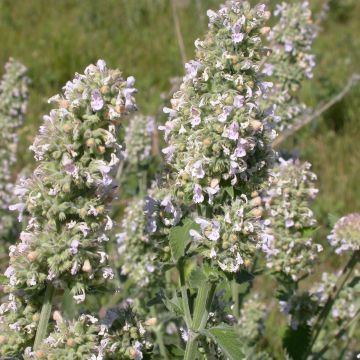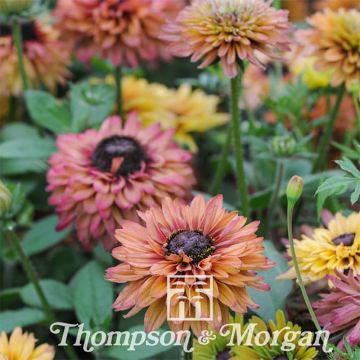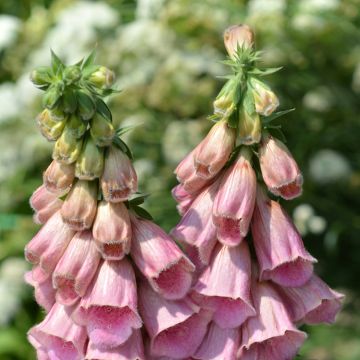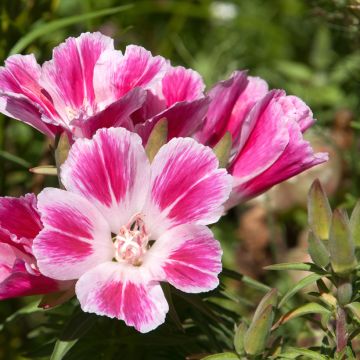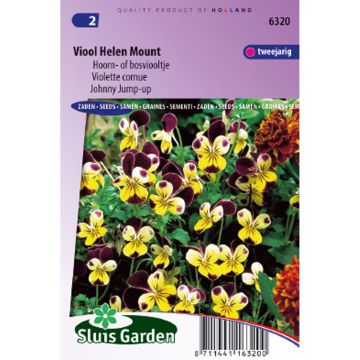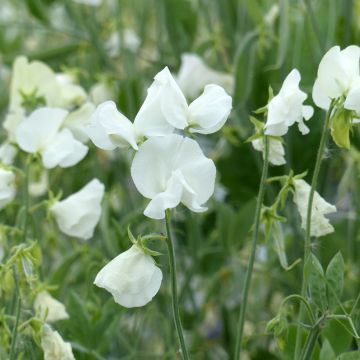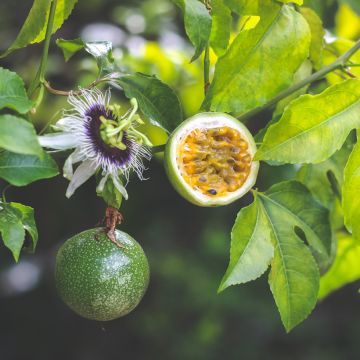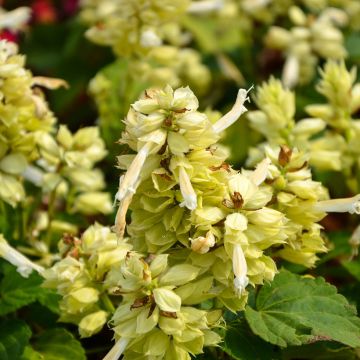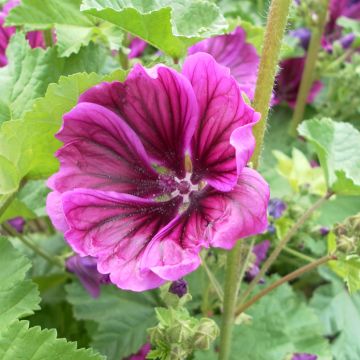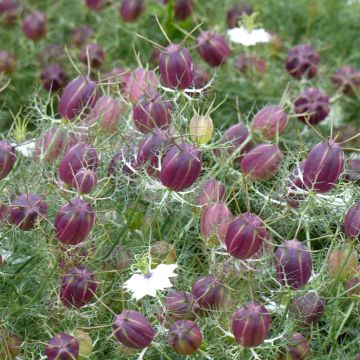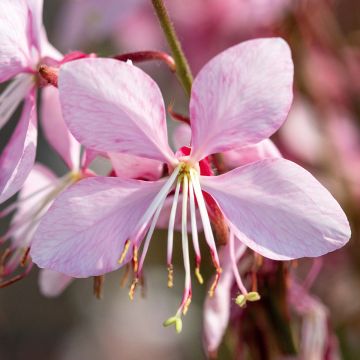

Phlox Drummondii Phlox Of Sheep
Phlox drummondii Phlox Of Sheep
Phlox Drummondii Phlox Of Sheep
Drummond's Phlox, Annual Phlox
I am pleased with the careful and rather prompt delivery of my large seed order. The explanatory sheets are a very interesting added bonus. And I would like to thank your team for quickly and unconditionally rectifying a small oversight of a packet of seeds (dwarf nasturtium). The phlox seedlings are underway and, for now, despite a slow start, everything is looking good, their growth is progressing.
Elsa F., 03/04/2018
This plant carries a 6 months recovery warranty
More information
We guarantee the quality of our plants for a full growing cycle, and will replace at our expense any plant that fails to recover under normal climatic and planting conditions.
Seed-only orders are dispatched by sealed envelope. The delivery charge for seed-only orders is €3.90.

Does this plant fit my garden?
Set up your Plantfit profile →
Description
The Phlox Drummondii 'Phlox Of Sheep' mix, also known as Drummond's Phlox, is a collection of dwarf annuals. These beautifully brighten up the edges of flowerbeds with their compact and bushy habit. Their numerous small white, cream, yellow, salmon, apricot, and pink flowers renew from June to August to delight the butterflies. Some of them are even bi-coloured with a yellow and white star-shaped centre. This mix is easy to grow, requires no maintenance, and allows for summer bouquets.
The Drummond's Phlox is named after a Scottish naturalist, Thomas Drummond, who discovered this plant in the prairies of Texas in 1830. This species is small (15 to 30 cm (6 to 12in) tall) and forms a bushy clump. Its leaves are green lanceolate and create a dense backdrop that hosts panicles of various colours. These panicles consist of multiple tubular flowers (about 2 cm (1in)) ending in five lobes. They are slightly fragrant and bring undeniable charm to romantic gardens. They prefer a sunny exposure and fertile soil to bloom generously. Don't hesitate to give them water in case of prolonged drought and place them in well-drained soil.
Phlox Of Sheep offers a range of particularly adorable colours. It brings brightness and warmth to flowerbeds and balconies in pastel shades and slightly tangy hues. You can integrate it into a multi-coloured ensemble that softens or brightens up a monochrome composition in white, yellow, or pink.
Report an error about the product description
Flowering
Foliage
Plant habit
Botanical data
Phlox
Drummondii
Phlox Of Sheep
Polemoniaceae
Drummond's Phlox, Annual Phlox
Cultivar or hybrid
Other Thompson and Morgan seeds
Planting and care
The Phlox Drummondii 'Phlox Of Sheep' are preferably sown under shelter in a seed tray from the month of March. If your climate is rather mild, you can even start in February as the seeds are capable of germinating as soon as the temperatures range between 13 and 15°C (55.4 and 59°F).
Just cover the seeds with a thin layer of compost (1 to 2 mm (0in)) that you will keep slightly moist and place in the sun (essential for germination). They will sprout between 10 and 21 days. When the young plants are large enough to be moved and the frost period is over, you can plant them. Choose a well-drained soil, if possible rich and in the sun.
You can also sow them directly in place after loosening the surface soil. Place one seed every 10/15 cm (4/6in).
Phlox are susceptible to powdery mildew, so you can perform a preventive treatment and make sure not to water the foliage, but the base of the plant.
Sowing period
Intended location
-
, onOrder confirmed
Reply from on Promesse de fleurs
Flower seeds
Haven't found what you were looking for?
Hardiness is the lowest winter temperature a plant can endure without suffering serious damage or even dying. However, hardiness is affected by location (a sheltered area, such as a patio), protection (winter cover) and soil type (hardiness is improved by well-drained soil).

Photo Sharing Terms & Conditions
In order to encourage gardeners to interact and share their experiences, Promesse de fleurs offers various media enabling content to be uploaded onto its Site - in particular via the ‘Photo sharing’ module.
The User agrees to refrain from:
- Posting any content that is illegal, prejudicial, insulting, racist, inciteful to hatred, revisionist, contrary to public decency, that infringes on privacy or on the privacy rights of third parties, in particular the publicity rights of persons and goods, intellectual property rights, or the right to privacy.
- Submitting content on behalf of a third party;
- Impersonate the identity of a third party and/or publish any personal information about a third party;
In general, the User undertakes to refrain from any unethical behaviour.
All Content (in particular text, comments, files, images, photos, videos, creative works, etc.), which may be subject to property or intellectual property rights, image or other private rights, shall remain the property of the User, subject to the limited rights granted by the terms of the licence granted by Promesse de fleurs as stated below. Users are at liberty to publish or not to publish such Content on the Site, notably via the ‘Photo Sharing’ facility, and accept that this Content shall be made public and freely accessible, notably on the Internet.
Users further acknowledge, undertake to have ,and guarantee that they hold all necessary rights and permissions to publish such material on the Site, in particular with regard to the legislation in force pertaining to any privacy, property, intellectual property, image, or contractual rights, or rights of any other nature. By publishing such Content on the Site, Users acknowledge accepting full liability as publishers of the Content within the meaning of the law, and grant Promesse de fleurs, free of charge, an inclusive, worldwide licence for the said Content for the entire duration of its publication, including all reproduction, representation, up/downloading, displaying, performing, transmission, and storage rights.
Users also grant permission for their name to be linked to the Content and accept that this link may not always be made available.
By engaging in posting material, Users consent to their Content becoming automatically accessible on the Internet, in particular on other sites and/or blogs and/or web pages of the Promesse de fleurs site, including in particular social pages and the Promesse de fleurs catalogue.
Users may secure the removal of entrusted content free of charge by issuing a simple request via our contact form.
The flowering period indicated on our website applies to countries and regions located in USDA zone 8 (France, the United Kingdom, Ireland, the Netherlands, etc.)
It will vary according to where you live:
- In zones 9 to 10 (Italy, Spain, Greece, etc.), flowering will occur about 2 to 4 weeks earlier.
- In zones 6 to 7 (Germany, Poland, Slovenia, and lower mountainous regions), flowering will be delayed by 2 to 3 weeks.
- In zone 5 (Central Europe, Scandinavia), blooming will be delayed by 3 to 5 weeks.
In temperate climates, pruning of spring-flowering shrubs (forsythia, spireas, etc.) should be done just after flowering.
Pruning of summer-flowering shrubs (Indian Lilac, Perovskia, etc.) can be done in winter or spring.
In cold regions as well as with frost-sensitive plants, avoid pruning too early when severe frosts may still occur.
The planting period indicated on our website applies to countries and regions located in USDA zone 8 (France, United Kingdom, Ireland, Netherlands).
It will vary according to where you live:
- In Mediterranean zones (Marseille, Madrid, Milan, etc.), autumn and winter are the best planting periods.
- In continental zones (Strasbourg, Munich, Vienna, etc.), delay planting by 2 to 3 weeks in spring and bring it forward by 2 to 4 weeks in autumn.
- In mountainous regions (the Alps, Pyrenees, Carpathians, etc.), it is best to plant in late spring (May-June) or late summer (August-September).
The harvesting period indicated on our website applies to countries and regions in USDA zone 8 (France, England, Ireland, the Netherlands).
In colder areas (Scandinavia, Poland, Austria...) fruit and vegetable harvests are likely to be delayed by 3-4 weeks.
In warmer areas (Italy, Spain, Greece, etc.), harvesting will probably take place earlier, depending on weather conditions.
The sowing periods indicated on our website apply to countries and regions within USDA Zone 8 (France, UK, Ireland, Netherlands).
In colder areas (Scandinavia, Poland, Austria...), delay any outdoor sowing by 3-4 weeks, or sow under glass.
In warmer climes (Italy, Spain, Greece, etc.), bring outdoor sowing forward by a few weeks.

































